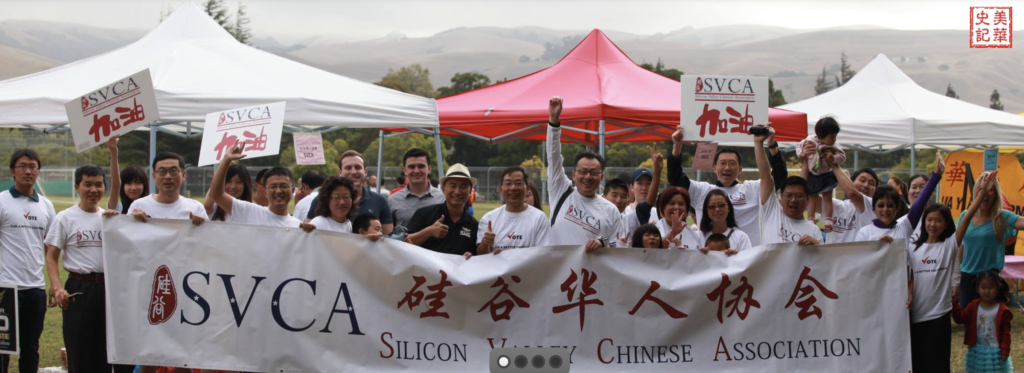Fan Jiao
From the recorded history of December 4, 1785, when three Chinese sailors arrived in the port of Baltimore, Maryland, on the ship Pallas[1], to the 19th-century California Gold Rush that attracted a large number of Chinese laborers to San Francisco, to the massive influx of Chinese workers needed for the construction of the transcontinental railroad across North America, to the present-day population of approximately 5 million Chinese Americans, California, as the place with the largest population of Chinese descent, has witnessed numerous influential civil rights movements throughout its immigration history of over two centuries.
This article focuses on a retrospective of the major Asian American civil rights movements in California from 2012 to 2022.
1. Major Waves of Chinese Immigration to the U.S.
Chinese immigrants constitute the third-largest foreign-born group in the United States, following Mexicans and Indians. The history of Chinese immigration to the United States can be categorized into three distinct waves: the initial wave commencing in the mid-1800s, the second one was between 1949 and 1980s, and the subsequent wave from the 1980s onwards.
Significantly, in 1868, the United States and China entered the Treaty of Burlingame[2], a pivotal agreement that formalized diplomatic relations between the two nations and emphasized the importance of safeguarding the rights of immigrants.
During the early nineteenth century, the initial wave of Chinese immigrants made their way to the West Coast. These pioneers ventured to California in search of gold, contributed to the construction of transcontinental railroads [3], and toiled in various agricultural endeavors, such as fishing, laundry services, and military services. With the rapid expansion of California’s agricultural sector, there emerged a pressing need for labor, leading white landowners to employ thousands of Chinese immigrants on their vast farms and agricultural enterprises starting in the 1860s. In fact, Chinese immigrants comprised approximately 75% of the total number of farmers in California [4]. Many of these skilled laborers possessed extensive farming experience and played a crucial role in the development of the state’s fruit, vegetable, and wine industries.
In the 1870s, thousands of Chinese workers played a pivotal role in the construction of an expansive network of earthen embankments within California’s Sacramento-San Joaquin River Delta. These embankments served the purpose of reclaiming and safeguarding farmland while effectively managing the risk of flooding [5].
Despite enduring significant humiliation and mistreatment during the Chinese exclusion movement of 1882, Chinese immigrants utilized American law as a courageous means to combat racial discrimination. In the first decade of the Chinese Exclusion Act alone, Chinese Americans fought more than 7000 court cases, most of which they won.
In a significant act of civil resistance, the Chinese Six Companies mobilized Chinese Americans nationwide on September 19, 1892, to protest the Geary Act. With a call to action, the Association urged the 110,000 Chinese Americans residing in the country to join forces in a large-scale demonstration.
This marked the first ever such large-scale civil rights movement by a minority in the land of United States of America.
As a form of civil disobedience, they defiantly refused to comply with the mandatory wearing of “dog tags” imposed by the Geary Act and each contributed one dollar towards the retention of legal representation. Their collective objective was to challenge the constitutionality of the Geary Act and work towards its reversal.[6]
Their resilience was evident in their utilization of legal channels to protect their rights, becoming a prominent aspect of the Chinese civil rights movement during the subsequent era of civil rights activism.
Furthermore, in subsequent civil rights movements, the application of the Fourteenth Amendment of the United States Constitution to uphold their own rights became a distinctive feature of the Chinese American civil rights movement.[7][8]
Due to World War II, the joint efforts of the United States and China in fighting against the German, Italian, and Japanese fascists, the repeal of the Chinese Exclusion Act in 1943 was accomplished and Chinese immigrants became eligible for citizenship [9]. In 1965, Congress passed the Hart-Celler Act [10], abolished the previous immigration admissions policy based on nationalities, establishing a legal framework that prioritized highly skilled immigrants and opened the door for people with family already living in the United States. Due to the U.S. diplomatic relations with Taiwan until 1972, most Chinese immigrants came from Taiwan or Hong Kong residents with family ties in the United States. Many highly educated Taiwanese immigrants settled in Silicon Valley, California, and the Research Triangle area in North Carolina while many less-educated Hong Kong residents predominantly settled in the suburbs of major cities.
The third wave of Chinese immigration began in 1980. This was a result of the formal establishment of diplomatic relations between the United States and China in 1972. Many government sponsored Chinese students and self-financed students came to the U.S. for graduate studies and, upon securing jobs, applied for the third preference category immigrant status (which accounted for approximately 23% of the total annual U.S. immigrant population) to obtain U.S. permanent residency rights.
During this period, due to the 1989 Tiananmen Square incident, the U.S. introduced the “Chinese Student Protection Act” in 1992[11], which allowed many Chinese students to avoid the requirement of returning to China for two years (J Visa’s two-year home residency requirement) and directly apply U.S. green cards.
Most of these young Chinese immigrants have chosen to work in California, Silicon Valley, and other technology centers. As a result, the demographic composition of the U.S. Chinese community has shifted towards immigrants from mainland China.
Since the turn of the millennium, there has been a notable rise in Indian immigrants coming to the United States. Over the past decade (2010-2020), both China and India have accounted for a significant share of H1-B visa recipients, leading to lengthier processing times for immigration applications.
It is worthwhile noting that the Asian American Movement for Equality, which played a vital role during the American civil rights movement of the 1960s and ’70s, originated in the streets of New York’s Chinatown in 1974. When a developer refused to hire Asian workers for a major construction project called Confucius Square, local Chinese activists took a stand, raising their voices and organizing months of protests that ultimately led to success. Their efforts gave birth to a powerful grassroots movement that has persevered for four decades. This growing civil rights movement in the Asian community has been partly inspired by the achievements of the black civil rights movement in the 1960s. Young and idealistic Chinese New Yorkers, directed their attention to the various troubling issues present in Chinatown and resolved that it was time to demand equal rights and equitable access to city services. DeMatteis Corp. eventually relented, agreeing to hire 27 minority workers, including Asians. [12] It was a major victory for the community and immediately established Asian Americans for Equality as an organization people could rely on when they had nowhere to go.
Significantly, it was the year of 1982 that marked a resurgence in the Asian American civil rights movement, following the civil rights movements of 1892 and 1974.
On June 23, Vincent Chin (陈果仁) was beaten to death by two white men in Detroit. [13] The lenient sentence angered the Asian American community in the Detroit area and across the country. Journalist Helen Zia (谢汉蓝)and attorney Liza Chan led the fight over federal charges. At the same time, many Chinese, Japanese and Korean Americans repeatedly marched through the streets of Detroit.
About 600 miles away, on November 19, in New York City, tens of thousands of Chinese in New York City marched through the streets of New York to protest the city’s proposal to build a new prison near Chinatown. Over the next four decades, as the number of prisons increased, so did the political participation of Chinese in New York. After years of hard work, Chinese New Yorkers began to win more and more city and state seats. [14]
2. Some Notable Chinese American NGOs
Founded in 1895, Chinese American Citizens Alliances [15] is the oldest Asian American civil rights organization. In 1946 with its backing, Congress removes immigration restrictions that prevented Chinese from benefiting from the 1945 War Brides Act as non-quota wives and children of American citizens, and it assisted the Dept. of Labor inducting Chinese transcontinental railroad workers into its Wall of Honor in 2014.[16]
Chinese Consolidated Benevolent Association aka “Chinese Six Companies” [17] had played an important role in helping pioneer Chinese immigrants of the late 19th and early 20th centuries, who came mainly from Guangdong province in southern China, and their descendants. CCBA gradually lessened its influence on later waves of Chinese immigration.
Founded in 1893, On Leong Chinese Merchants Association [18] currently has branches in 23 cities with 30,000 clients. It helped pioneer Chinese businesspeople established in various cities in the past.
Founded in 1973, OCA-Asian Pacific American Advocates [19] aka Organization of Chinese Americans is a progressive organization to advance the social, political, and economic well-being of APPIs in the U.S.
All these NGOs helped pioneer Chinese immigrants who largely live in large metropolitan cities. Early immigrants tend to lean toward the Democrat party.
3. Californians Civil Rights Movement & Proposition 209 in the 90s
In 1995, an effort by two Bay Area academics to eliminate affirmative-action programs in California set off a debate over civil rights that was rapidly spreading across the country and threatened to be one of the most divisive national dialogues in years.
The two professors, Glynn Custred, and Thomas Wood [20] wanted the issue of affirmative action put to a popular vote in California in 1996 general election, insisted that the measure would not end affirmative action, but merely eliminate preferential treatment in state employment, education and contracting based on race, sex, and ethnicity.
The campaign was supported and funded by the California Civil Rights Initiative Campaign, led by the University of California Regent Ward Connerly [21]. A key co-chair of the campaign was law professor Gail Heriot, [22] who served as a member of the United States Commission on Civil Rights.
The poll results indicated that most black Californians and Democrats strongly oppose Proposition 209, whereas the Asian community showed a noticeable divide, with 43% of Latinos opposing the proposition and 38% supporting it. However, two-thirds of Independents backed the proposition. [23]
Proposition 209 [24] was voted into law on Nov 5, 1996, with 55 percent of the vote.
3.1 Impact of Proposition 209
Proposition 209, passed in 1996, prohibited UC and other state entities from using race, ethnicity, or sex as criteria in public employment, public contracting, and public education. Since that time there have been several research articles written and analyses conducted to better understand the impact of this law in California.
3.1.1 Equal Treatment
Proposition 209 promotes equal treatment by prohibiting the consideration of race, sex, color, ethnicity, or national origin in public employment, education, and contracting. The proposition aimed to ensure that individuals are judged on their qualifications, abilities, and merits rather than their demographic characteristics.
3.1.2 Merit-Based Selection
Proposition 209 targets establishment of a merit-based selection process where individuals are evaluated based on their skills, achievements, and qualifications. This approach aimed to create a fair and level playing field, where opportunities are awarded based on individual merit rather than group affiliation.
3.1.3 Equal Opportunity
Supporters believed that affirmative action policies, which consider race or gender as factors in decision-making, amounted to reverse discrimination and violated the principle of equal opportunity. Proposition 209 sought to eliminate preferential treatment based on race or gender and promote equal opportunities for all individuals.
3.1.4 Colorblind Society
Proposition 209 aims to foster a colorblind society where individuals are not judged or treated differently based on their racial or ethnic background. Supporters argued that this approach would help reduce divisions and promote unity among Californians by focusing on shared values and qualifications rather than divisive factors.
3.1.5 Public Resources and Efficiency
Proposition 209 aims to prevent the wasteful allocation of public resources by prohibiting the consideration of race or gender in government contracting. Supporters believed that this would promote fairness, efficiency, and accountability in the use of public funds.
3.1.6 Accountability and Meritocracy
By eliminating affirmative action and preference based on demographic factors, Proposition 209 aimed to establish a system that holds individuals accountable for their actions and achievements. Supporters believed that this would encourage personal responsibility, hard work, and a meritocratic society where success is determined by individual efforts and abilities.
3.1.7 Critics of Proposition 209
Opponents of Proposition 209 raised concerns about its adverse effects on diversity and underprivileged communities. They argued that affirmative action was crucial in addressing the systemic inequalities and barriers encountered by underrepresented groups. They believed that removing affirmative action would only serve to further restrict opportunities for historically marginalized individuals.
Some called it as a “chilling effect”.[25]
4. 2012’s California Senate Bill SCA-5 Repealing Proposition 209
On December 3, 2012, California State Senator Ed Hernandez introduced Senate Constitutional Amendment 5 to the California State Senate, which would ask voters to eliminate California Proposition 209’s ban on the use of race, ethnicity, sex or national origin in admissions, recruitment and retention programs at California’s public universities and colleges. [26]
According to the author, SCA 5 was introduced in response to a decline in black and Latino college admissions, particularly within the University of California system as the bill author claimed. This decline in enrollment was particularly evident in California’s most competitive public schools, namely UC Berkeley and UCLA.
The bill consisted of two main components. Firstly, it aimed to eliminate the specific provisions established by Proposition 209 that forbid the state from discriminating against or granting preferential treatment based on race or national origin in the operation of public education. Secondly, it sought to exclude the University of California and the public school system from the definition of “state” under Section 31 of Article 1, effectively repealing the application of Proposition 209’s provisions to these entities.
The bill was passed in the California Senate on January 30, 2014, with 3 Chinese descendants:
- 27 Ayes: Beall(D), Block(D), Calderon(D), Corbett(D), Correa(D), De León(D), DeSaulnier(D), Evans(D), Galgiani(D), Hancock(D), Hernandez(D), Hill(D), Hueso(D), Jackson(D), Lara(D), Leno(D), Lieu(D), Liu(D), Mitchell(D), Monning(D), Padilla(D), Pavley(D), Roth(D), Steinberg(D), Torres(D), Wolk(D), Yee(D)
- 9 Noes: Anderson(R), Berryhill(R), Fuller(R), Gaines(R), Huff(R), Knight(R), Vidak(R), Walters(R), Wyland(R)
- 3 NVR: Cannella(R), Nielsen(R), Wright(D)
4.1 Major Supporters
4.1.1 Asian Americans Advancing Justice (AAJC) [27]
AAJC has been a strong supporter of Affirmative Action since its inception 25 years ago. More specifically it supports “race-preference” college admission by filling an amicus brief with Supreme Court to support UT in “Fisher v. Univ. of Texas” in 2012. Recently, it has been playing an important role in litigating some DOJ’s wrong accusations against some Asian Americans under China Initiative.
4.1.2 Chinese for Affirmative Action (CAA) [28]
Founded in 1969, CAA is a progressive NGO for protecting the civil and political rights of Chinese Americans and advancing multiracial democracy in large metropolitan cities in the U.S. CAA also filed an amicus brief with Supreme Court to support UT in “Fisher v. Univ. of Texas” in 2012.
4.1.3 Hmong Innovating Politics (HIP) [29]
HIP is a grassroots NGO whose mission is to strengthen the political power of Hmong and disenfranchised community through innovative civic engagement and strategic grassroots mobilization.
4.2 Major Opponents of SCA 5
4.2.1 American Civil Rights Institute [30]
Founded by Ward Connerly and Thomas L. “Dusty” Rhodes in 1996 in Sacramento, California, it is a national civil rights organization created to educate the public on the harms of racial and gender preferences.
4.2.2 Silicon Valley Chinese Association (SVCA) [31]
Since 2014, SVCA has been the primary driving force behind the civil rights movement of Asian Californians. With the dedicated efforts of thousands of volunteers, SVCA played a crucial role in defeating SCA 5, AB 1726, and subsequently Proposition 16. Moreover, they have actively fought against anti-Asian hate and racism in later years.
On March 31, 2021, SVCA took a stance against “race-preference” college admissions by filing an amicus brief with the Supreme Court. Their purpose was to support “Students for Fair Admissions, Inc.” in the case of “Students for Fair Admissions, Inc. v. President and Fellows of Harvard College.”
4.2.3 80-20 Initiative [32]
The 80-20 Initiative founded in 1998, also known as the 80-20 Political Action Committee (80-20 PAC), is a non-profit, non-partisan organization in the United States that advocates for equal opportunity, equal justice, and equal treatment of Asian Americans.
In March 2012, 80-20 took a survey taken by 47,108 Asian Americans. The FOR/AGAIST ratio for a “race-neutral” college admissions policy was 52.4 to 1, a 98% support share. On May 29, 2012, it became the FIRST Asian American national organization to take legal action against “race-preference” college admission by filling an amicus brief with the Supreme Court to support Fisher in “Fisher v. Univ. of Texas” [33]
Since the SCA-5 passage on 1/30/2014, SVCA and 80-20 formed an informal coalition to defeat this bill.
4.2.4 Indian American Forum for Political Education[34]
Early on with the 80-20 Initiative, this Indian American national organization was involved to start the No SCA 5 campaign.
4.2.5 Filipino Advocates For Justice [35]
Filipinos have long been foes of Affirmative Action unconditionally.
4.2.6 Other Organizations & Individuals
4.2.6.1 Asian Pacific Islander American Public Affairs (APAPA) [36]
APAPA was neutral for SCA 5 as it has been supporting AA, although some members opposed the bill. It supported Proposition 16 to repeal Proposition 209.[37]
4.2.6.2 Southeast Asia Resource Center (SEARAC) [38]
SEARAC is a national civil rights organization that empowers Cambodian, Laotian, and Vietnamese American communities to create a socially just and equitable society. While most Vietnamese Americans opposed the bill, most of Cambodian and Laotian supported it.
4.2.6.3 Bob Huff
From 2012 to 2015, as the Minority/Republican Leader in the California State Senate and a moderate Republican, Bob Huff consistently supported the Asian American opposition to SCA 5 and AB 1726. [39]
4.2.6.4 Bo Wu (吴波)
The editor of a progressive WeChat Chinese article publisher (《美国华人》) after 2015, helped 80-20 create some web site/media opposing SCA 5.
4.2.6.5 Haipei Shue (薛海培) [40]
Initially shocked by the enthusiasm and confidence of his patriotic countrymen, the political consultant sent by Ted Lieu, he co-founded the progressive organization UCA, United Chinese Americans two years later, made significant efforts for the subsequent DOJ wrongful cases of Sherry Chen [41] and Xiaoxing Xi [42], the unfortunate plight of certain Chinese-American scientists affected by the China Initiative, the opposition against anti-Asian hate [43], and the resistance against the Alien Land Laws of 2020 [44].
4.3 The Fatal Flaws in Repealing Proposition 209
The author of SCA 5, on the one hand, clearly lacked an understanding of the fundamental issues in education in the United States or California, and on the other hand, he didn’t possess knowledge about the state’s higher education situation.
4.3.1 Improving K-12 education in the community is the only way to completely address the difficulty of accessing higher education
To address the problem of failing to get into college, the root causes in the early stage should have been identified and the quality and outreach of K-12 education should have been improved. Good K-12 education also comes from the neighborhood and the communities the kids live. “It Takes a Village” [45] As Hillary Clinton put it, a society that meets all a child’s needs is important.
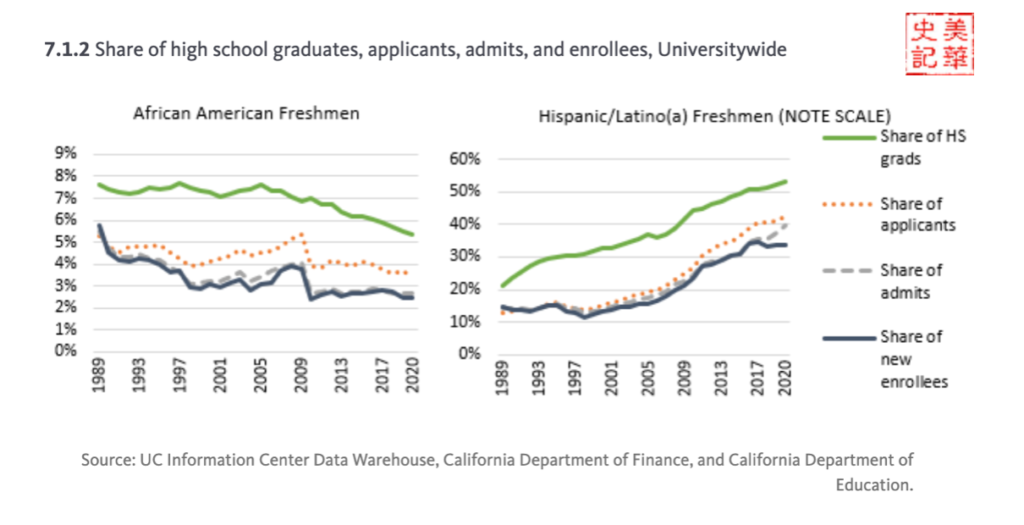
From the graph above, over the 23-year period from 1997 to 2020, the number of applications and admissions to the University of California of Black and Latino students were proportional. The admissions for Latino students increased rapidly due to the progress in K-12 education in their communities.[46]
Artificially lowering the admission standard for a small group of students will not address this root problem.
4.3.2 The accusation against Proposition 209 without statistical data support
The authors of the bill ignored some important statistical data. According to official public data, it is undeniable that both in absolute numbers and percentages, the enrollment of ethnic minorities at the University of California (UC) has been increasing.
From 1996 to 2013, the African American student population at UC, which represents 6.6% of California’s total population, increased from 4.0% to 4.3%. The Latino student population, representing 38.2% of the state’s total population, increased from 14.3% to 27.8%. The Asian student population, representing 15% of the total population, increased from 32% to 35.9%. The only declining group was white students, who represent 39.4% of the total population, and decreased from 42% to 27.9%.
Furthermore, the University of California system led the nation in admitting talented students from socioeconomically disadvantaged backgrounds regardless of their race or ethnicity. These students often receive Pell Grants, and in the 2011-12 academic year, 41% (180,000+ / 74,933 individuals) of UC and CSU freshmen were Pell Grant recipients (i.e., students with family incomes below $20,000).
On the other hand, in the 2007-2008 academic year, 42% of UC undergraduates were first-generation college students. From 2007 to 2013, almost two-thirds of UC first-generation college students came from families with annual incomes below $40,000, and an additional 22% came from families with incomes between $40,000 and $80,000. Together, these two groups accounted for seven-eighths of all first-generation college students.[47]
These data indicate that Proposition 209 has had a positive impact on the admissions situation at the University of California, promoting personal effort and excellency, helping to enhance diversity, and providing fair opportunities for students from socioeconomically disadvantaged backgrounds.
4.4 Major Events
The proposal drew loud opposition from Asians led by Chinese, Filipino, Indian, and Vietnamese Americans, whose enrollment in the UC system has been more than double their share of California’s total population since the ban on racial preferences took effect. The Asians formed a strong coalition of more than 30 organizations with tens of thousands of Asian Californians.
The three senators, Ted Lieu, D-Torrance; Carol Liu, D-La Canada/Flintridge and Leland Yee, D-San Francisco voted yes for SCA 5, but expressed concerned after being bombarded with constituent calls and emails.
Mr. Lieu immediately dispatched a political consultant to the Silicon Valley to find out what was going as it was the first time young Chinese Americans had spoken loudly.

The constituents of the rest of California also called and sent emails to Congressman Mike Honda of District 17, and some other California Assembly members, Paul Fong of 28th District and his senior representative Evan Low asking them to either vote No or persuade their Democrat colleagues in both Senate and Assembly to change their minds.
A Change.org petition opposing SCA 5 had about 112,800 supporters in early March 2014.[48]
Many emails were also sent to various Chinese American NGOs including 80-20initiative.net.
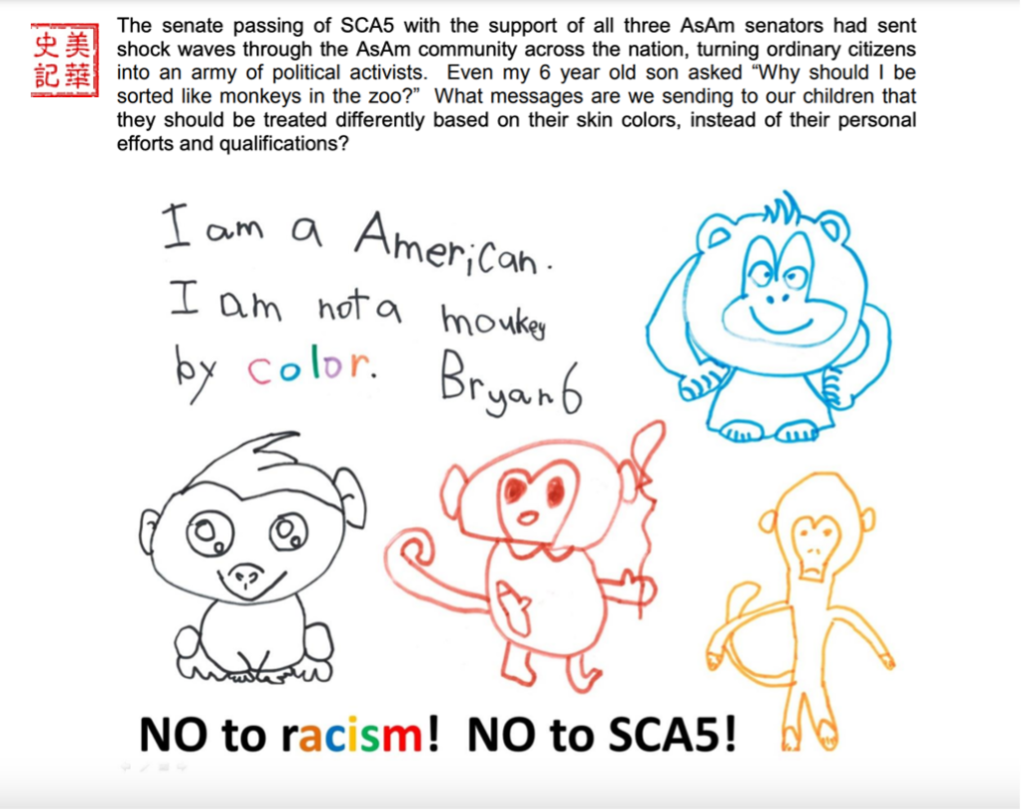
4.4.1 APAPA/Bill Author Meeting in Cupertino (3/2/2014)
On March 2, 2014, hundreds of Silicon Valley Asian American residents attended the Senate Constitution Amendment No. 5(SCA-5) townhall meeting at Cupertino Community Hall.
The town hall meeting was moderated by Dr. Albert Wang, APAPA Chair with the four panelists: Bob Huff, State Senator, Lin-chi Wang, Past Chair of Dept. of Ethnic Studies, UC Berkeley, David Lehrer, President, Community Advocates, and Henry Der, past Deputy Superintendent, California Department of Education. [49]
Many including Alex Chen, President of SVCA, and Mr. Dun Sun of Cupertino Planning all voiced their concerns.
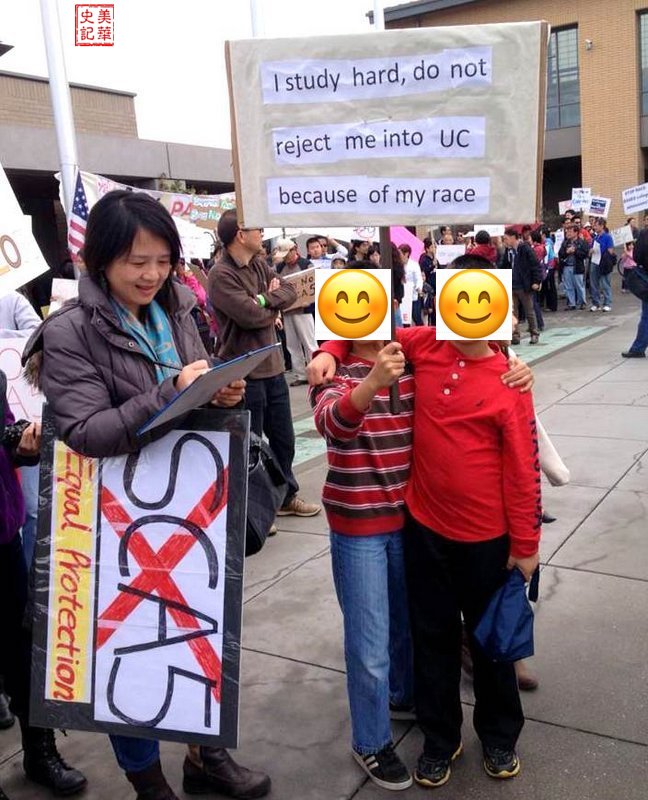
4.4.2 Cupertino City Council Meeting (3/17/2014)
On March 17, 2014, the city of Cupertino had its council meeting discussing SCA 5. Mayor Gilbert Wong started the meeting by reading from an article in The Sacramento Bee dated March 17, 2014, explained that at the request of Senator Ed Hernandez, Assembly Speaker John A. Perez has halted efforts to overturn California’s Prop. 209 and sent the measure back to the State Senate without taking any action in the lower house.
About 60+ people spoke in the meeting to oppose the bill including Selina Chang, Ignatius Ding, Rishi Kumar, Tarun Galagali, on behalf of Ro Khanna, a Congressional candidate of District 17, and council member and former mayor Barry Chang. [50]
At the hearing, Cupertino council members listened to residents’ comments and voted 4-0 to write a letter that will express the council’s support for SCA 5 being put on hold, make mention of the more than 60 speakers on March 17, address concerns about similar measures being brought forth and express a desire to see increased spending in higher education to create more opportunities to all California students.
4.4.3 Winning Support from State Legislators and Congress Members
4.4.3.1 Pressuring Assembler member Paul Fong (方文中)
Chief of Staff Evan Low (罗达伦) told the lobbying voters that the lawmaker needed 1,000 US citizens’ signatures from the 26th administrative district (Cupertino, Sunnyvale, Santa Clara, Northern and West San Jose in Silicon Valley) to oppose SCA 5. In less than two weeks, nearly 400 people from Cisco and Juniper alone signed the request opposing the proposal, and soon Dennis Chiu, the campaign manager of Mr. Fong, confirmed that the number of signatures had exceeded 1,000.
4.4.3.2 Lobbying CA 17 Mike Honda
When the SCA 5 was first released, 17th Congressman Mike Honda announced his support. Then the local 80-20 member spoke to him in his congressional district office, expressing 80-20’s disappointment, on the other, hoping that he would change his attitude and communicate with California state legislature to against SCA 5.
4.4.4 80-20’s Endorsement for CA 2014 Election
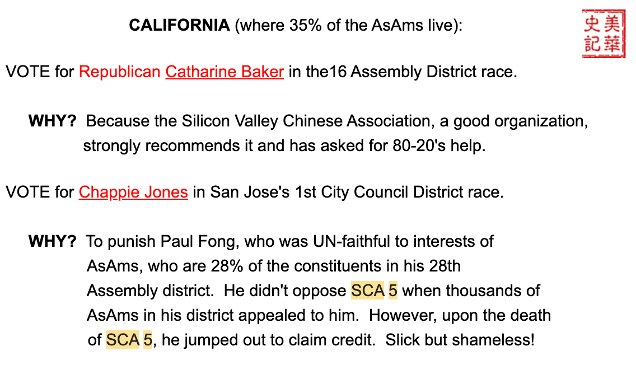
4.5 SCA 5 Defeated
On March 17, 2014, State Senator Ed Hernandez withdrew the bill [51]. Thus, SCA-5 was defeated. However, it is widely believed that they do not intend to stop their efforts to overturn Proposition 209.
5. 2016’s California Assembly Bill AB 1726
Less than 2 years from the withdrew of SCA-5, on 1/28/2016, California Assembly Bill 1726 was introduced, [52] although its predecessor 2015’s AB-176 was rejected by the Governor Brown, it would amend current state code to require California state agencies, especially public institutions of higher education and public health, to expand the number of Asian American, Native Hawaiian, and Pacific Islander subgroups for which they collect and report data to also include Bangladeshi, Hmong, Indonesian, Malaysian, Pakistani, Sri Lankan, Taiwanese, Thai, Fijian, and Tongan Americans, among others, about 15% of California population.
5.1 Previous Legislation AB 176
AB 176 (Bonta) of 2015 was substantially like this bill and would have required the same entities under this bill, in addition to, the Department of Managed Health Care (DMHC) to collect and tabulate specified demographic data. Although there was value in understanding data on race, ethnicity, gender, and other aspects of identity on a practical level such that they can help elucidate how government laws and programs can be shaped to reflect a changing population,
AB 176 was vetoed by Governor Brown.
He understood the concerns about the increasing tendency to categorize and stratify people. While dividing individuals into ethnic or subcategories may provide more information, it does not necessarily lead to a deeper understanding of the actions that should be taken. Merely focusing on ethnic identity may not be sufficient. It is worth noting that CSU, community colleges, and UC already offer various options for self-identification, including multiple ethnic identities to choose from. For instance, CSU provides 50 choices for API (Asian and Pacific Islander) applicants alone. Therefore, it may be considered unnecessary or premature to codify the collection and reporting of at least 12 API groups for several years into the future. [53]
5.2 Fatal Drawbacks
According to 2020 US Census, only 15% of California residents are Asians [54]. If the data collections on both education and health would be benefit to any California resident, why was the bill designed to ignore the 85% of the population?
Let’s look at a couple of ethnic groups to see if so-called data collection would be benefit for them if designed and implemented correctly.
5.2.1 Ignoring Black Immigrants
According to Pew Research Center, the number of Black immigrants living in the U.S. reached to 4.6 million in 2019 since 1965’s Immigration Reform. Among them 700,000 live in CA, with most of them coming from Ethiopia & Kenya of Eastern Africa, and Nigeria & Ghana of Western Africa.[55]
Although both Malaria & Yellow Fever are common in all African countries, Zika virus, dengue, filariasis, leishmaniasis, and onchocerciasis (river blindness) are diseases carried by insects found in East Africa.[56] On the other hand, Pneumonia, Measles, and Marburg virus were common in Western Africa. [57][58]
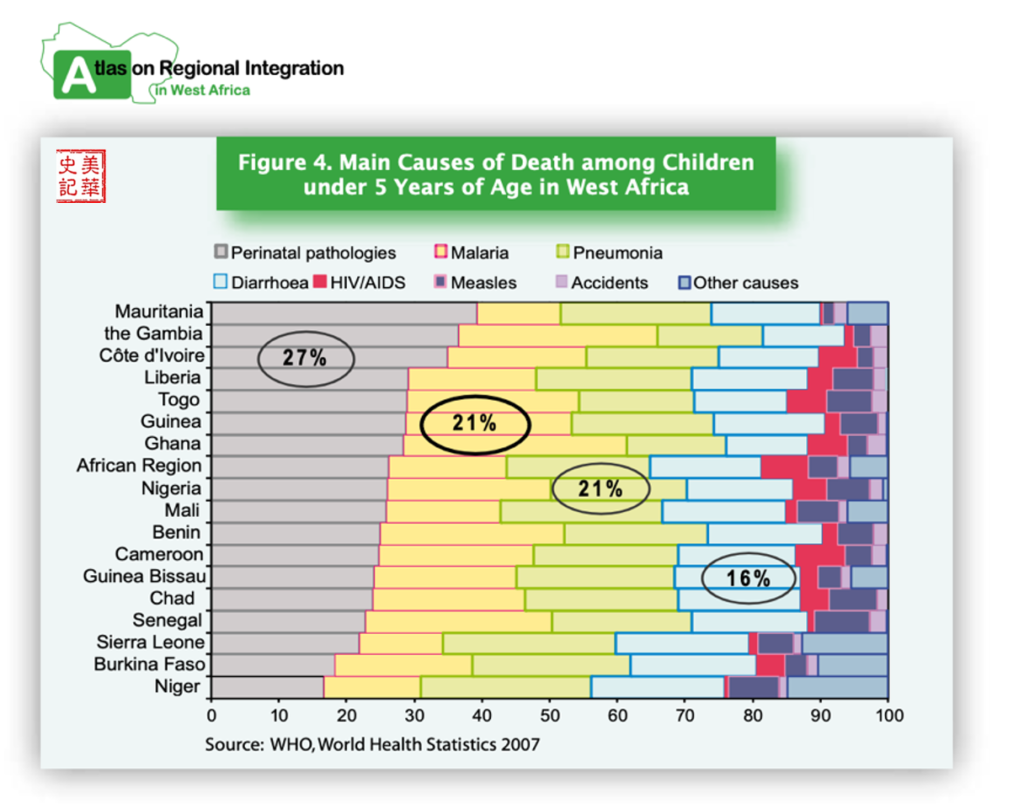
Therefore, it would have been beneficial to categorize Black immigrates by region so that health professionals could order different lab tests to diagnose the sickness of a black immigrate more efficiently and quickly.
Why did California government ignore them?
5.2.2 Ignoring Latino Immigrants
According to the 2019’s survey [59], there are almost 13 million Mexicans living in CA, compared the second most Salvadoran Americans of 732K.
While Salvadoran’s leading health risk is heart disease, the leading killer for Mexicans is Diabetes/Obesity. [60][61]
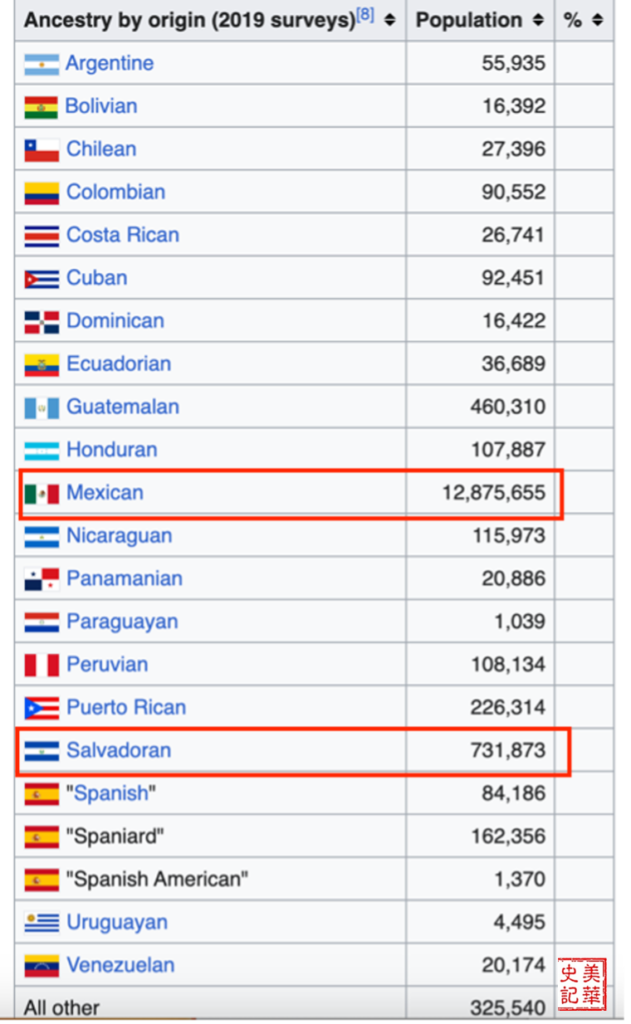
But why did California government ignore them?
5.2.3 Failed Addressing Governor Brown Veto Message for the Pervious Legislation AB 172
The author of the bill chose to ignore to address Governor’s veto message towards the previous legislation AB 172, which is a significant hindsight.
5.2.4 Safe Keeping the Stratified Data collected by Government Agencies and State Universities not addressed
The stratified data to be collected by federal and state agencies may easily be manipulated to advance race-based public policies that are unlawful because of the passing of proposition 209 of 1996.
5.2.5 The DMHC Data Missing
In requirement of health data collection, the data collection from Department Managed Health Care (DMHC) was mysteriously omitted from the previous legislation without explanation.
5.2.6 Fail to Discuss/Handle Privacy and Security Issues of Data Collection
The bill author didn’t even address any privacy and security concerns of data collections.
5.3 Major Events
5.3.1 SVCA/Bill Author Meeting in San Clara
On March 27, 2016, Assembly members Bonta (the bill author), Kansan Chu(朱感生) and Silicon Valley Chinese Association (SVCA) had a meeting in Santa Clara discussing the AB-1762.
Many folks came in prepared and asking some point-blank questions. Many concerned about why the bill only applied to 15% of Californians. Some believed the bill might have taken the inside track for race-based admission policies for University of California to come back quietly, after having fought off the SCA-5 just a couple of years ago.
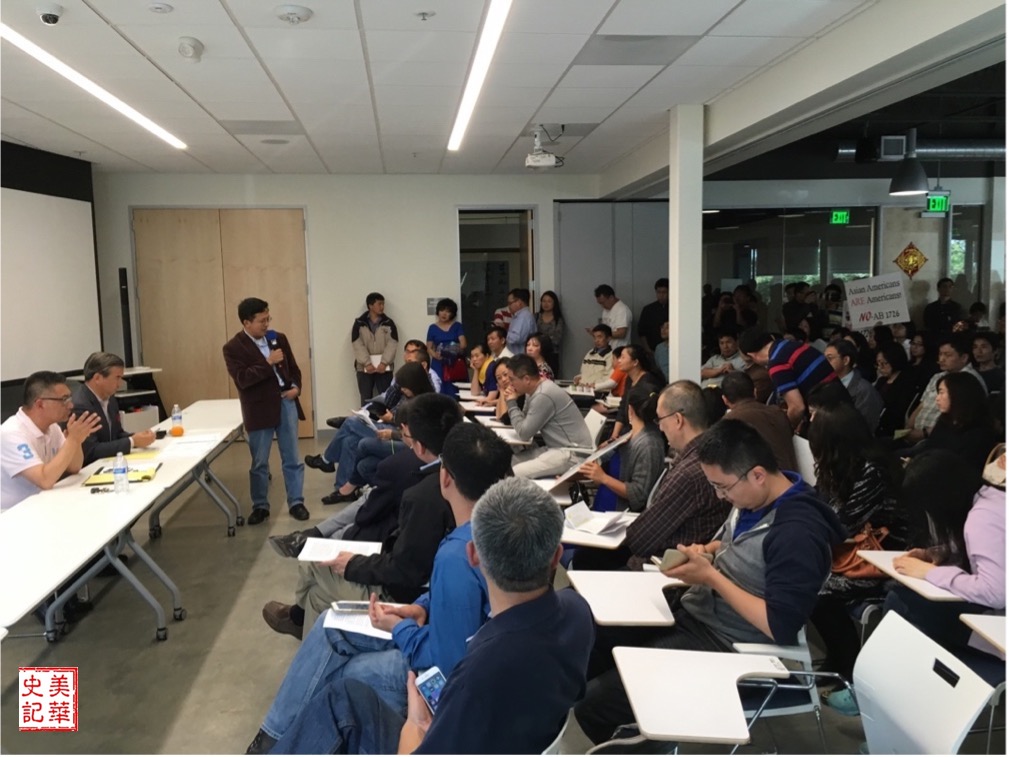
6.3.2 Striving for Support from Evan Low
Many Asian Americans had reached out to the co-author of the bill and Assemblyman Evan Low ever since the bill was drafted in Jan 2016. He refused to return our phone calls and emails.
This puzzled some of us. A person I talked to said he had donated to Assemblyman’s campaign, and still Assemblyman didn’t reply to his emails wrt AB-1726.
On March 25, 2016, more than sixty Asian Americans showed up at the California Assembly member Evan Low’s district office to protest his decision and try to convince him to change his mind.
The Assembly person had nowhere to be seen in his office on that day.
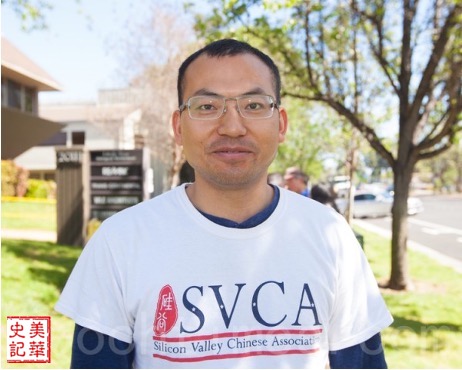
6.3.3 Protests at State Capital
Between June to August, Asian Americans came to the State Capital in Sacramental to protest the bill FIVE TIMES with many folks driving from Southern California (one way trip about 140 miles from Silicon Valley, 420 miles from Orange County, respectively). The last one was on August 10 with more than four hundred Chinese Americans.
On June 21, about 200 folks attended a Senate session with some Yes campaign folks. We were lining up to speak to the Senate for one minute.
Later the author went to the Senator/Dr. Richard Pan (a pediatrician) ’s office to continue the interrupted discussion during the session. The author asked him why the data collection wouldn’t include African Immigrates if it were claimed having so many benefits to any ethic group as East Africans suffer different diseases compared with their western neighbors. He told the author he needs to look some references to get back to (and he didn’t).
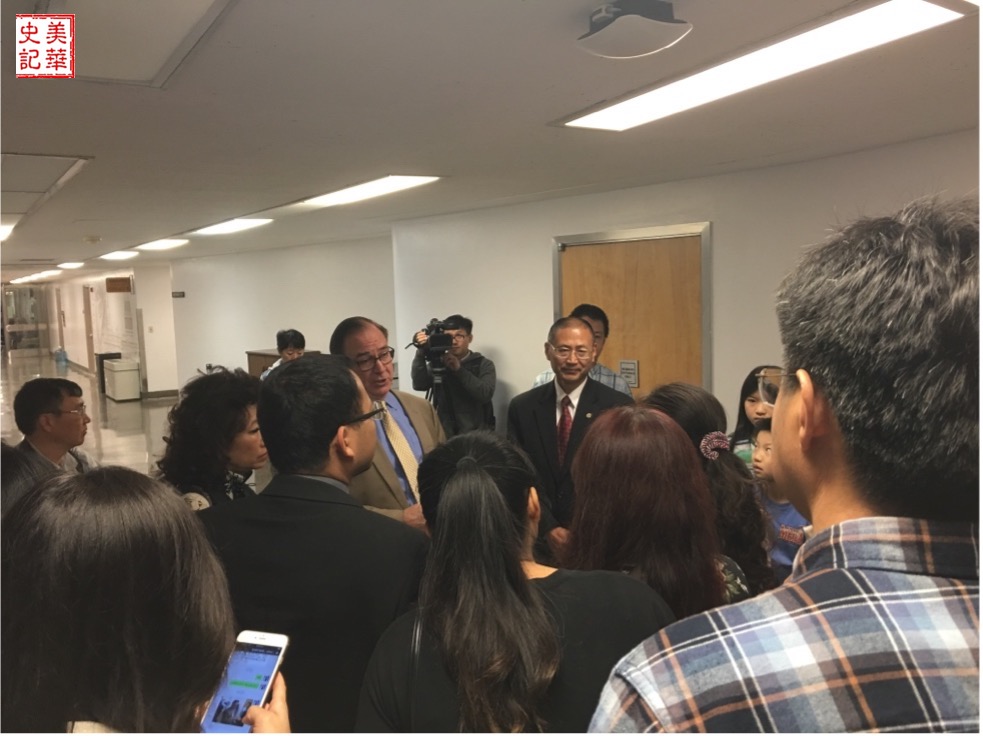
6.3.4 August 10’s Rally at Sacramento
Of the 5 rallies at the State Capital, this one was the largest by having at least 400 most Chinese Americans from Northern and Southern parts of the state.
A rally registration booth was set up in the east corner of the state buildings. The people were getting directions to the Assemblymen or Senator offices they intend to visit.
The rally started around noon. The youngest speaker was about 12 years old.

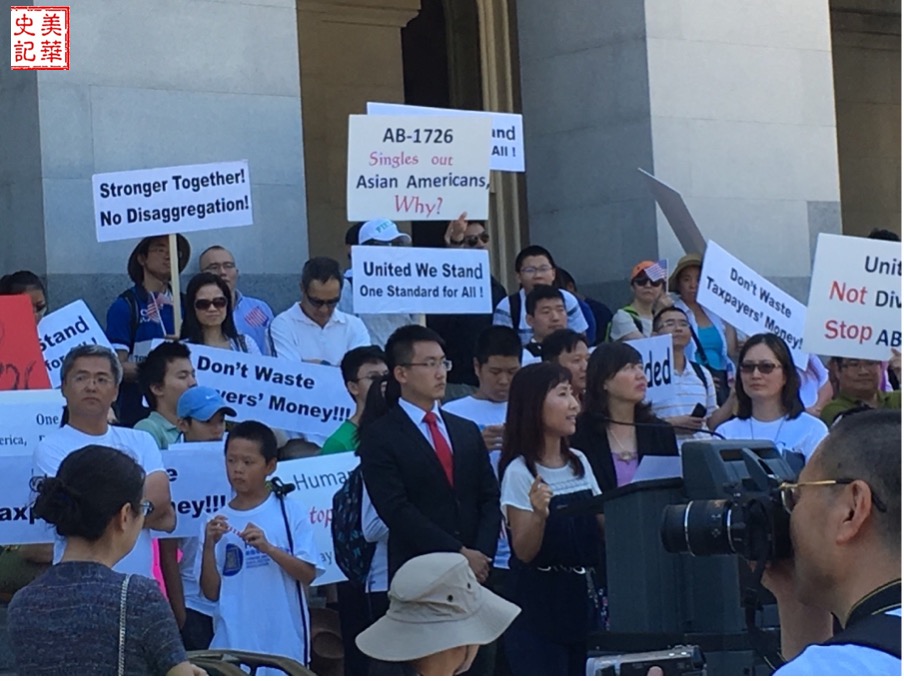
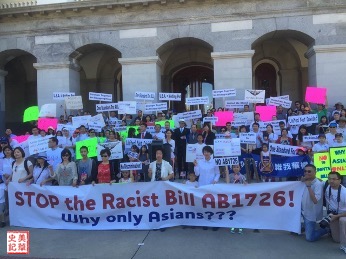
6.4 The New and Compromised Version of Bill
A new event happened on 8/19/2016, the August 19 Senate amended bill by deleting all the education related requirements for the data collection, compared with its January 28 introduced version.
On September 25, 2016, Governor Brown signed the AB-1726 into law to enable data collection on health for AAPI communities, despite of various serious drawbacks.
Is there actually Asian American data collection implemented in the UC system? Here’s a portion of the UC freshman application form:

7 ACA 5 and Proposition 16 of the 2020 Election
On 1/18/2019, California Assembly Constitutional Amendment 5[62] was introduced to repeal Section 31 of Article I thereof relating to government preferences from the Constitution of the State of California thus effectively removing Proposition 209 from 1996’s general election.
On June 10th, 2020, during a California Assembly floor held on San Francisco API Caucus Chair Assemblymember David Chiu and members of the API caucus turned a blind eye to fierce opposition of ACA-5 from their constituency, including a large majority of the Asian American community. They passed ACA-5 on a majority party-line vote – 60 to 14. Members of the API Legislative Caucus who voted to pass ACA-5 included:
David Chiu (17 D), Al Muratsuchi (66 D), Ash Kalra (27 D), Rob Bonta (18 D), Todd Gloria (78 D), Evan Low (28 D), Adrin Nazarian (46 D), and Phil Ting (19 D).
ACA 5 was passed by both Assembly and Senate by June 20, 2020. It became one of the qualified statewide ballot measures as Proposition 16 for the November 3, 2020’s general election.
7.1 What Do the Majority of Americans Think Affirmative Action
In 2014, Senate Amendment 5 failed to repeal Proposition 209 from the 1996 general election that elected President Clinton for the 2nd term. Two years later California Assembly wanted to pass AB-1726 on data collection on education & health for only 15% of the population and only achieved 50% of their goals. Now in the 2020 election here they went again!
Despite all this, several national surveys showed Affirmative Action has been unpopular even among Democrats and minorities.
A 2019 Survey from Pew Research Center [65] found that 73% of Americans believe colleges and universities should not consider race or ethnicity when making decisions on student admissions. Just 7% believe race should be a major factor in college admissions, while 19% believe it should be a minor factor.
In addition to race or ethnicity, majorities also believe that colleges should not consider an applicant’s gender (81%), whether legacy admissions / a relative attended the school (68%), or athletic ability (57%) when making decisions.
California’s government just didn’t get it, and it keeps wasting the taxpayers’ money.
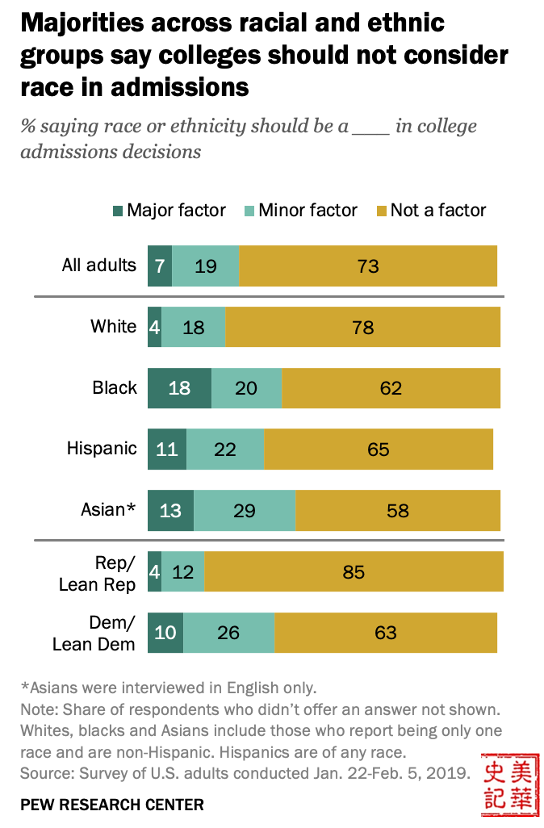

7.2 Yes on 16
Proposition 16 was endorsements from then Senator Harris, Gov. Gavin Newsom, the California Democratic Party, almost every single major California newspaper editorial board, and a smattering of big businesses.
The Yes on 16 received 29 million with donors from Piedmont philanthropist M. Quinn Delaney, Blue Shield of California, former Microsoft CEO Ballmer, Netflix founder Hastings, executives from Facebook, Salesforce and Cisco Systems, the owners of San Francisco Giants/49ers, and Los Angeles Dodgers.[66]
With such a thick war chest, the Yes on 16 spent $600,000 on opinion research and focus groups.
In March 2020, when the coronavirus pandemic was at its peak, Governor Gavin Newsom issued a stay-at-home order, voters were working from home, and the campaign came up TV ads bombardon the airwaves to attack the opponents as white supremacists like those rallies in Charlottesville, Virginia, from August 11-12, 2017.[67][68]
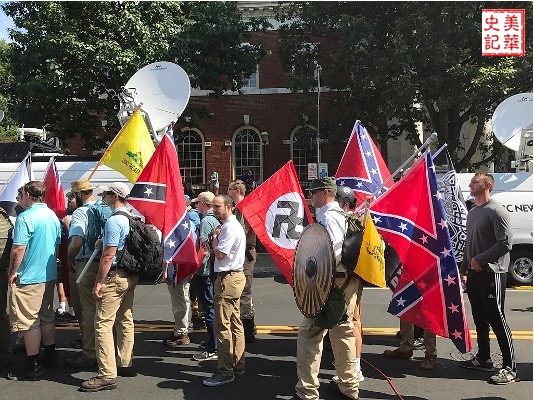
Other than buying those ridiculous TV Ads and bulletin boards, Yes on 16 didn’t do typical campaign outreach, thought people would be staying home in front of the TV in this difficult COVID pandemic time.
Yes on 16 also had about 500 progressive Chinese American volunteers, who helped post messages in both Chinese and English in various WeChat groups, and FACEBOOK groups.
7.3 No On 16
Representing a diverse and broad-based coalition of concerned organizations to oppose Assembly Constitutional Amendment ACA 5, the Silicon Valley Chinese Association Foundation (SVCAF), San Diego Asian Americans for Equality (SDAAFE), TOC Foundation, Chinese American Equalization Association (HQH) and Asian American Coalition for Education (AACE) issued the statement denouncing several members of Californian Asian & Pacific Islander (API) Legislative Caucus on June 15, 2020.
The former University of California Regent Ward Connerly who views of a color-blind America where racism “is no longer a moral issue,” was the Chairman of No On 16 leading the campaign.
Stopprop16.org is the campaign website sponsored by SVCA, and it was managed by Tony Guan, a board member of SVCA/SVCAF/ERFA. Frank Xu was the Treasurer for the campaign.
Frank Xu, then the founder of SDAAFE, wrote in an article in The San Diego Union-Tribune,
“Yet because of my opposition to Proposition 16 and measures like it, parts of the media and proponents of racial preferences have feverishly painted me, and many first-generation political activists like me, as selfish parents who only care about their children’s admission to UC Berkeley.
They have refused to accept, and at times refused to report, that not only do we abhor racial discrimination practiced against Asian Americans, but we also believe that safeguarding equal protection serves everyone, including Blacks, Latinos, Whites, Asians, and Americans of every creed and color.” [69]
7.3.1 The Strategies
No on 16 armed by 8,000 small individual donors and more than 3,000 volunteers, had no fear confronting career politicians and special interest groups, and huge deficit of funding of $1.6 million vs $30 million of 70 big donors.
7.3.1.1 Car Rallies Throughout CA
Because of the pandemic, the No Campaign doubled down in outreaching populations as Affirmative Action hasn’t been popular in recent years. There had been 22 car rallies in CA with the first one starting in Cupertino on July 3, 2020. With elected local officials leading the way, the determined and passionate volunteers were eager to talk to citizens along the way.
7.3.1.2 Low-budget online Media blitz plus Bulletin boards
Supported by 8,000 individual small donors, various FACEBOOK groups, Twitter accounts, and some bulletin boards in CA highways were set up to gather support for next-car rallies and fund-raising efforts.
7.3.2 Car Rallies
7.3.2.1 The First Car Rally at Cupertino on July 3rd
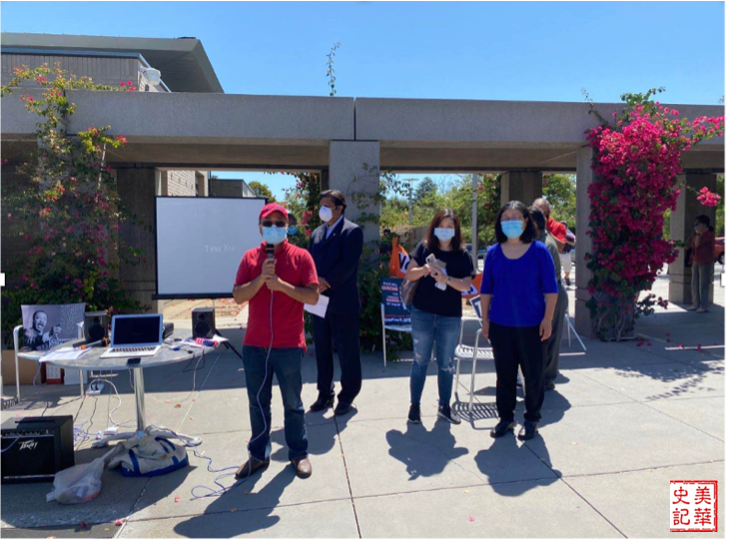
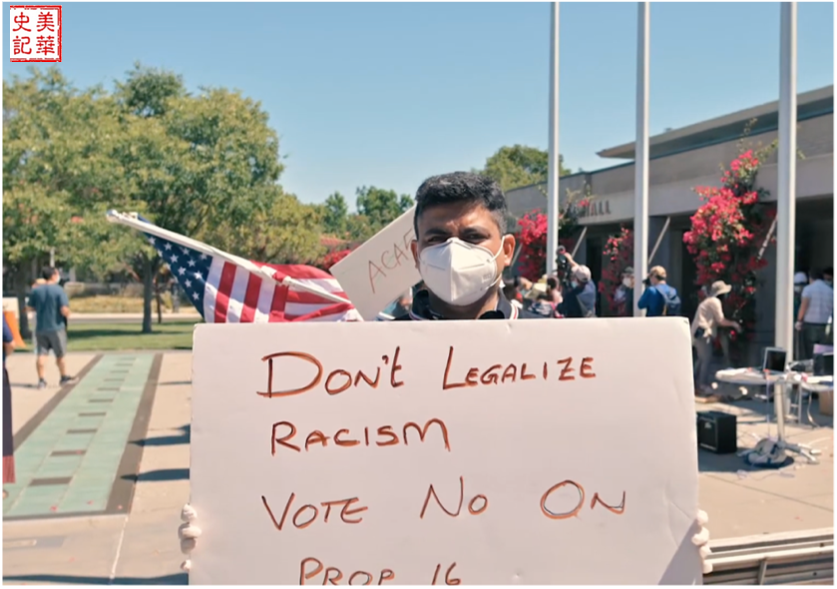
7.3.2.2 The Second Car Rally at Fremont on July 11th
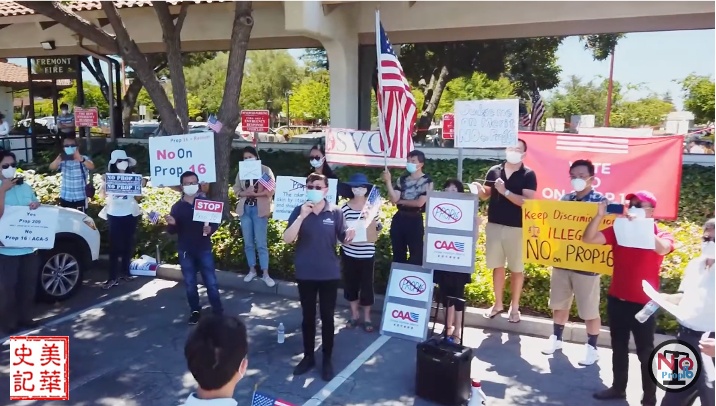
7.3.2.3 Car Rallies in LA on August 8th
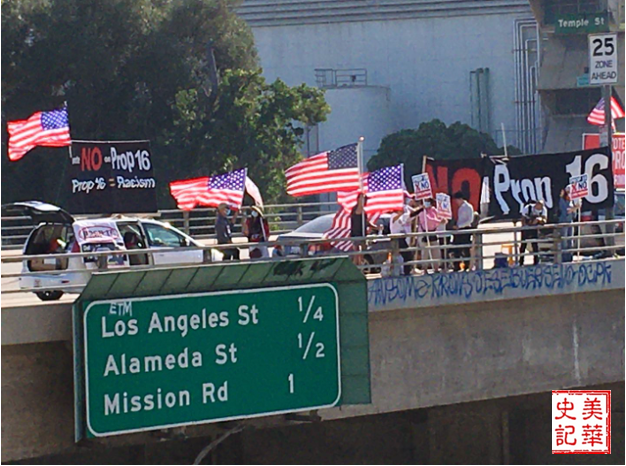

7.3.2.4 Car Rally in SFO on August 22nd
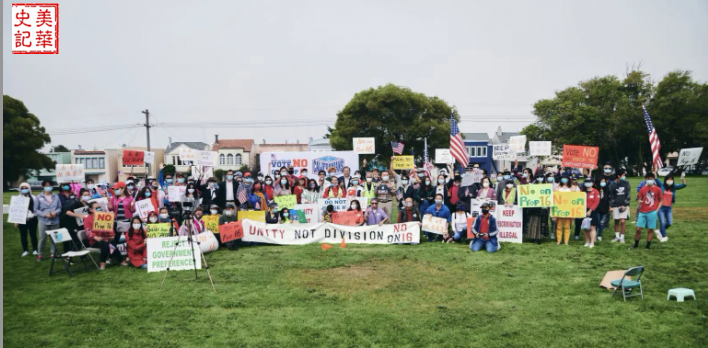
7.3.2.5 Bulletin Board near Fresno
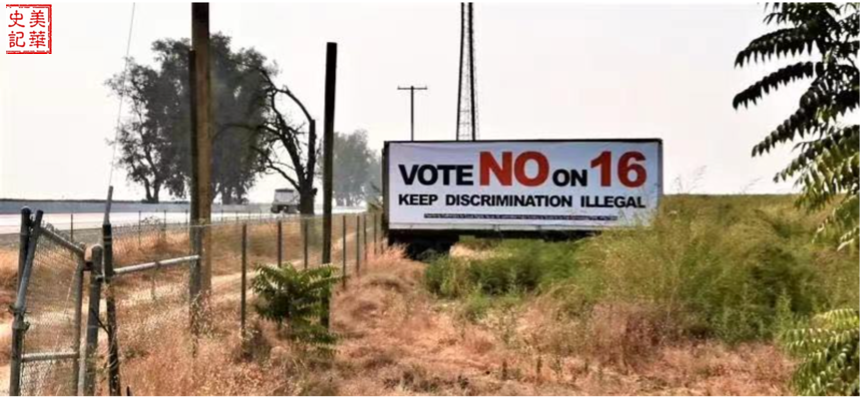
7.3.2.6 Car Rally at Sacramental on August 8th
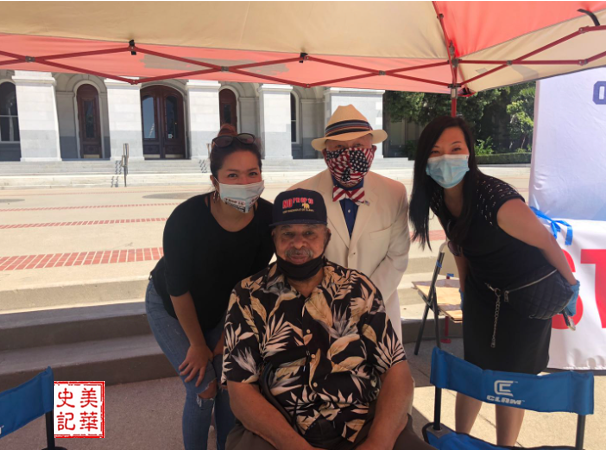
7.3.2.7 Car Rally in Foster City on August 15th
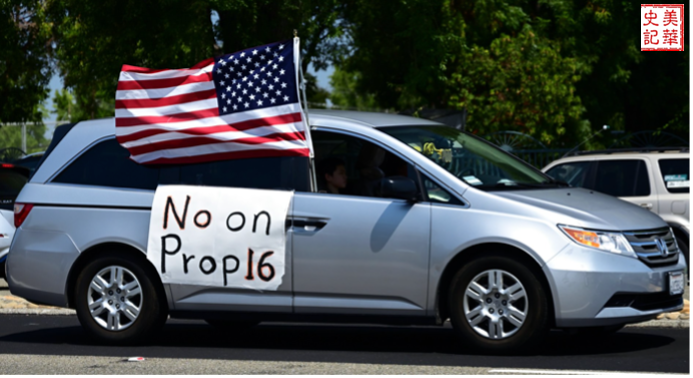
7.3.2.8 2022 Protests in Steps of Supreme Court in D.C.
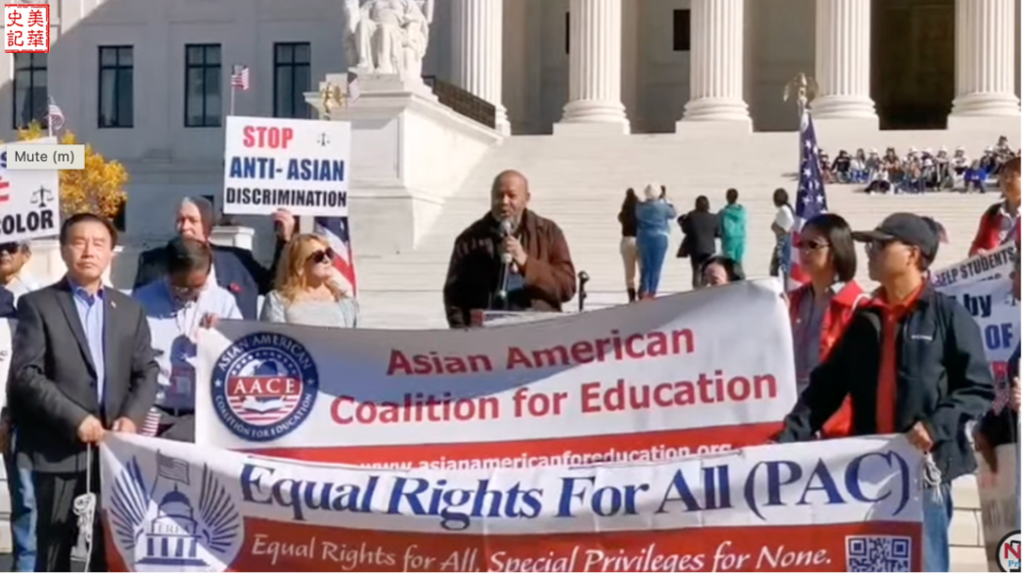
7.3.3 Public Policy Institute of California Statewide Survey
In September 2020, PPIC revealed the latest polling on Prop 16:
“Among likely voters, 31 percent would vote yes, and 47 percent would vote no, with one in five (22%) undecided. Forty-six percent of Democratic likely voters support Proposition 16, compared with 26 percent of independents and 9 percent of Republicans. The San Francisco Bay Area (40% of likely voters) and Los Angeles (37%) are the only regions with more than one-third of support (28% Orange/San Diego, 25% Central Valley, 20% Inland Empire). “Support for Proposition 16 is well below 50 percent, with one in five voters undecided about this effort to add diversity as a factor in public employment, education, and contracting decisions,” Mark Baldassare, PPIC president and CEO says. [70]
7.4 Election Results
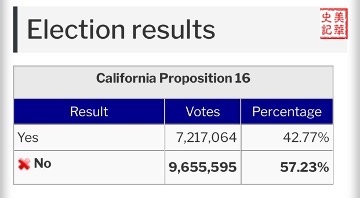
8 San Francisco Bay Area Stop APPI Hate Movement
8.1 Killing of 84-years old Grandpa Vicha
Vicha Ratanapakdee, an 84-years old Thai American, was walking in a SF street on the morning of Jan 28, 2021, when 19 years old Antoine Watson ran across the street and shoved him to the ground. The assault was captured on a CCTV camera across the street. Grandpa Vicha died shortly.
Soon after this shocking crime, San Francisco District Attorney Chesa Boudin, in an interview with The New York Times, characterized Antoine Watson’s behavior as a “temper tantrum,” a phrase typically employed to describe young children. The victim’s family expressed their deep dismay upon hearing Boudin’s remarks.[71]

8.2 Stop AAPI Hate Group, & Hate Crime Data
During the late 1800s, Russell Jeung’s family faced forced eviction from their residences in Monterey, California. Jeung, the co-founder of the Stop AAPI Hate group, revealed that the entire village was set ablaze when the Chinese community refused to comply with the townspeople’s demand for their departure. Stop AAPI Hate has emerged as a prominent force in monitoring and combatting the surge of anti-Asian attacks across various communities in the country. Through its No Place for Hate policy initiative, the group is now striving to transform this grassroots movement into legislation by engaging with the California legislature [72].
Cynthia Choi, co-founder of Stop AAPI Hate, emphasized the existence of systemic, pervasive, and insidious anti-Asian racism. She highlighted how members of their communities feel constrained in their ability to walk on sidewalks, use public transportation, or even go grocery shopping.
SF Mayor London Breed revealed a staggering 567% increase in anti-Asian hate crimes from 2020 to 2021 in San Francisco as an illustrative example.
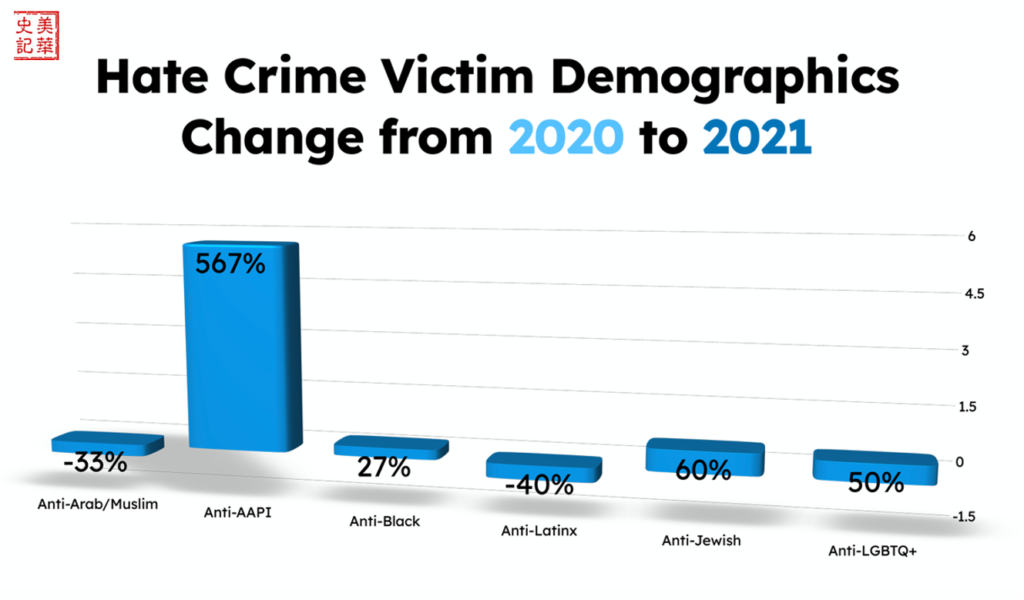
8.3 SVCAF and CFER Joined the Fight
On February 14, 2021, Silicon Valley Chinese Association Foundation (SVCAF) and Californians for Equal Rights (CFER) jointly condemned the recent surge of anti-Asian hate crimes in San Francisco, Oakland, and San Jose communities and urge the upholding of the equal protection to combat racial discrimination.[73]
“SVCA foundation condemns the recent violence against the Asian community. We are extremely concerned about the deterioration of community safety in recent years and the insidious policy of racial division, which has underlined these racially motivated attacks,” commented Jason Xu, SVCAF’s President, “We urge all community groups, lawmakers, and elected officers to work together to improve public safety!”
According to Frank Xu, President of CFER, the presence of divisive tribalism runs deep within our society, evident in the growing inclination to foster divisions among various groups based on factors like race, gender, ethnicity, or skin color. The introduction of initiatives like critical race theory in public education, rather than promoting unity, has the potential to exacerbate the existing racial divisions we encounter.
8.4 Recall of San Francisco DA Chesa Boudin
A former public defender, Boudin pledged to undo the harms of system racism, hold police accountable for misconduct, and end the criminalization of poverty. After his election in November 2019, he became one of the most prominent leaders in a growing movement to elect progressive prosecutors.
Unfortunately, he wasn’t prosecuting criminals aggressively and his instituting progressive policies were putting the safety of residents at risk, especially throughout 2021 hate crimes against Asian Americans in San Francisco increased dramatically, and he sided with criminals on various occasions.
ABC News anchor/reporter Dion Lim had pressed SF DA Boudin about what had been done on crimes against Asian Americans through 2021 and 2022. Lim has sent at least four emails to Boudin and his communications and policy advisor Rachel Marshall since Boudin appeared on ABC7’s 11 p.m. newscast in January to discuss the double fatal hit-and-run involving a parolee. The man hit and killed Hana Abe and Elizabeth Platt on New Year’s Eve. The emails asked for comments on various stories pertaining to parolees and crimes toward Asian Americans. But both didn’t respond to her emails.
Lim pressed on referencing a tweet Boudin made on Feb. 16 denouncing racism toward Asian Americans, but Boudin became impatient and frustrated.[74] “Excuse me, Ms. Lim is there a question? I know there are other people with questions,” said Boudin.
At the same time, many SF residents complained about ever-increasing car break-ins and viral smash-and-grab robberies at major retail stores, claiming they were becoming common occurrences as consequences of Boudin’s policies.
“I agree with the spirit of some of the policies that he’s implemented, but where Chesa has failed is by removing prosecutorial discretion completely,” said Brooke Jenkins, a former homicide prosecutor who left the DA’s office in October and joined the recall movement. “We need somebody who can institute reform in a manner that is safe and effective so that everywhere else around the country sees us and says ‘yeah, actually it’s working here, let’s try it.'” Jenkins, one of more than 30 prosecutors to resign since Boudin took office in January 2020, told CBS News the rest of the country is looking to San Francisco as a model in criminal justice reform. She added that “if it looks like lawlessness” and “victims not having a voice in the courtroom” then voters elsewhere “will reject anyone who tries to run on a platform of reform.”[75]
The second campaign was led by Mary Jung and Andrea Shorter, both members of the Democratic Party, and had a deadline of October 25 to collect the same number of signatures. Jung is a former chair of the San Francisco Democratic County Central Committee. The second campaign submitted 83,484 signatures to the Board of Elections, which announced on November 9 that via a review of a representative 5% sample of signatures, they determined that the number of valid signatures exceeded the required 51,325 and thus that a recall election would take place on June 7, 2022.
Many volunteers of the Silicon Valley Chinese Association including the author joined the recall campaign (“Proposition H”) by providing valid signatures for the recall.
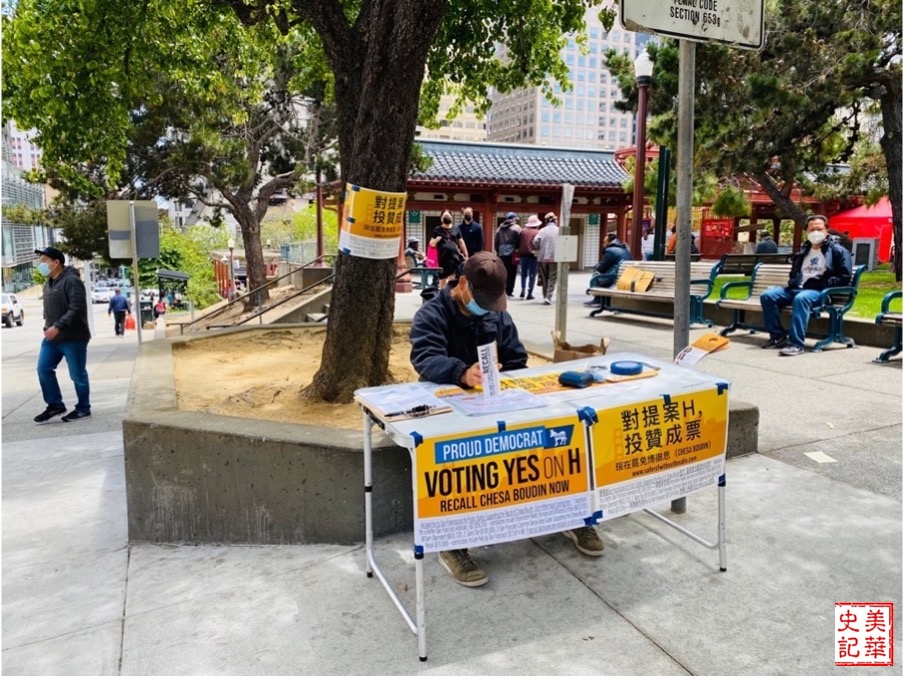
8.4.1 The result of the recall
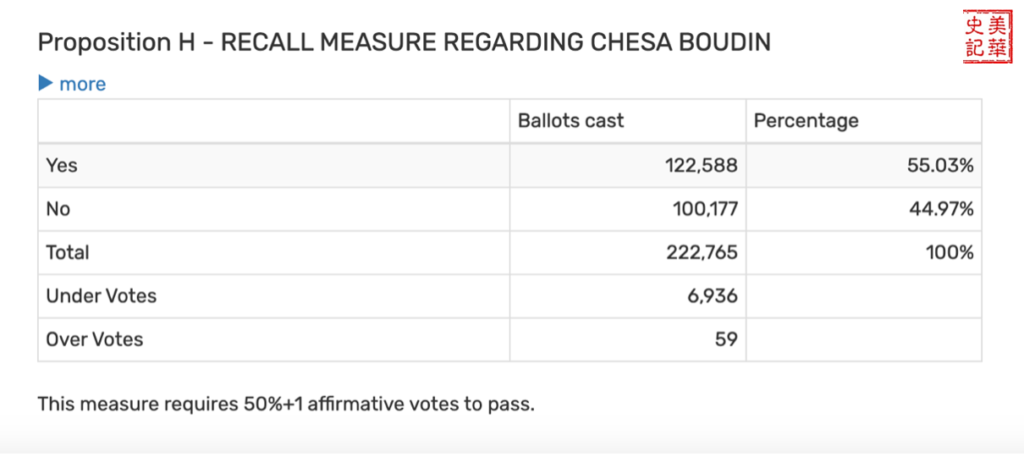
8.4.2 Vicha Ratanapakdee Way
On October 1, 2022, with blessings from Buddhist monks, Vicha Ratanapakdee Way was officially unveiled that afternoon, renaming from the previously known as Sonora Lane.
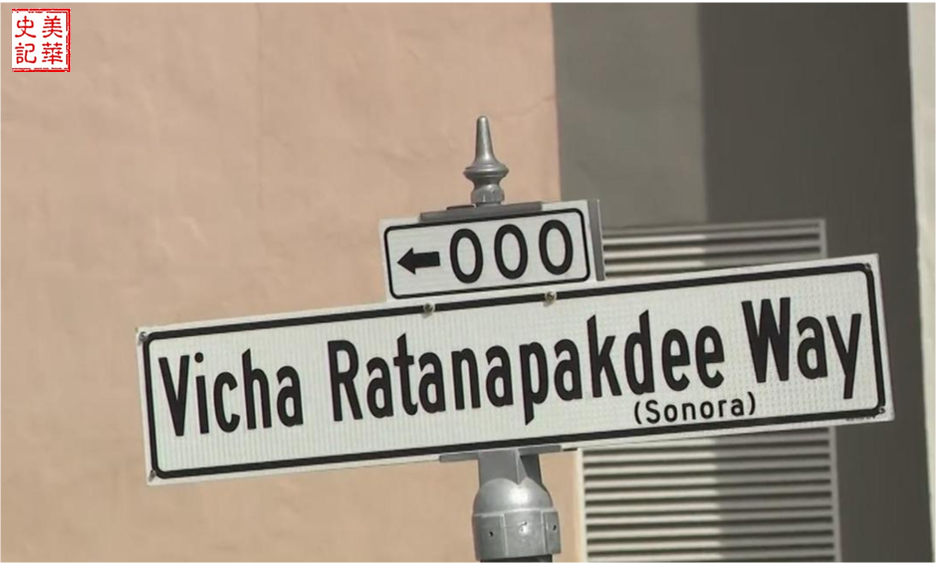
9 CFER, a New and Important Watch Dog for the Equality and Merits of All Californians
CFER, a newly established and significant watchdog organization, advocates for equality and merit-based opportunities for all Californians. Its mission is to ensure fairness and equal treatment in various aspects of life, including education, employment, and public services. With a focus on promoting equal rights and opportunities, CFER aims to address disparities and combat discrimination in California. Through its efforts, CFER strives to create a more inclusive and equitable society that values the merits and potential of every individual, regardless of their background or identity.
9.1 2023’s U.S. Commission on Civil Rights Briefing
The U.S. Commission on Civil Rights held a briefing on March 24, 2023, on the federal government’s response to anti-Asian racism in the United States. [76] The Commission’s investigation sought to examine the federal government’s role in documenting, prosecuting, and preventing hate crimes against persons of Asian descent during the COVID-19 pandemic.
Dr. Wu is the Executive Director of Californians for Equal Rights Foundation. She previously served in the same capacity for the historic No on 16 Campaign. She writes for Minding the Campus of the National Association of Scholars, the Epoch Times, and other premium outlets. She also sits on the board of Parents Defending Education Action and advises Color Us United as well as Parents Defending Education.
During this civil rights briefing, she delivered a report addressing the opposition to anti-Asian racial discrimination [77]. She highlighted the following points:
9.1.1 Criminal incidents targeting Asian Americans are egregious and must be addressed in the context of rising threats to public safety in general.
In short, addressing these incidents requires a multifaceted approach that involves both immediate responses and long-term strategies.
9.1.2 Framing anti-Asian hate crimes in the narrative of systemic racism or hate misleads the public on conceptual, methodological, and moral grounds.
Not all hate incidents against Asian Americans can be attributed solely to white supremacy or systemic racism. Hate crimes and discrimination can stem from a variety of factors, including ignorance, and xenophobia.
9.1.3 Persistent discrimination against Asian American students in education, justified under the names of diversity, equity, and race-based affirmative action, is a much more salient and consequential form of anti-Asian discrimination.
If policymakers are serious about identifying and tackling discrimination against Asian Americans, they must confront the elephant in the room: systemic and ongoing anti-Asian discrimination in education through the practice of race-conscious admissions. Whether it is in admissions to selective U.S. colleges and universities or in the recruitment of gifted and talented students at the K-12 level, evidence regarding higher standards, de facto quotas, and negative stereotypes to limit the access of Asian-American applicants abound.
9.2 CFER Leadership Role in Analyzing New CA Bills Pertinent to Equality and Merits
In 2023, CFER’s “Legislative Analysis” [78] summarizes 45 new bills and its shorter “Legislative Digest” [79] focuses on 13 particularly egregious ones. These legislative proposals have come to our attention because they violate Prop. 209, perpetuate the diversity scheme, dumb down standards, or compromise public safety in the name of equity.
Between April and May, CFER submitted official position letters opposing the 13 bills. The State Legislature had only recognized CFER’s status as the main organized opposition to five of the 13 bills, including AB 672, AB 735, AB 789, AB 1078, and AB1701; it ignored the rest of CFER’s submissions.
CFER has now become the primary organization opposing those FIVE California state bills.
9.2.1 2023’s ACA 7
On June 15th, the California Assembly once again attempted to challenge Proposition 209, which aims to protect equal rights for all Californians. This time, the proposed bill is known as ACA 7.[81]
In 2020, Proposition 16 (ACA 5) was introduced with the intention of completely removing Proposition 209 from the state constitution. However, it was rejected by California voters with a majority of over 57%. Therefore, ACA 7 takes a different approach by seeking to add an exemption clause to Proposition 209, which prohibits any special privileges for individuals in California public institutions. ACA 7 presents an illogical proposal of “prohibiting A but allowing A in certain circumstances.”
Conclusion
Today, there are approximately 5.4 million Chinese Americans in the United States. In California, Asian Americans make up 18% of the population, with 1.35 million Chinese Americans.
Since 1882, Chinese Americans have undertaken four large-scale civil rights movements. They collaborated with some early Chinese non-governmental organizations to oppose the Chinese Exclusion Acts from 1882 to 1943. In the 1970s and 1980s, they participated in civil rights movements such as the protests against the murder of Vincent Chin and the opposition to community prisons in New York’s Chinatown. From 2012 to 2022, Asian Americans in California united and launched a new civil rights movement, advocating for equal rights and against anti-Asian hatred.
Additionally, many Chinese Americans across the country are currently fighting for mistreated Chinese American scholars and the rights to American land (an analysis by MIT Technology Review on the “China Initiative” cases showed that out of 148 accused individuals, 88% were of Chinese descent [82]).
Through these years of civil rights movements, we have come to realize the importance of understanding our own characteristics and values, acknowledging, and appreciating the characteristics and values of other ethnicities, and standing united with other communities for our collective success. We will continue to promote non-partisan cooperation, prioritize dialogue, compromise, and engage in mutually respectful participation.
Looking back at the civil rights movements carried out by Chinese Americans in California over the past decade, it is a concrete manifestation of their struggle for themselves and their children. In this new era, new civil rights movements will encompass broader aspects, and it is believed that more Chinese Americans will consciously participate in future civil rights movements.
References:
- Chinese Immigration (1785 – 1950), nsmcdani, accessed on 3/9/2023, https://www.timetoast.com/timelines/chinese-immigration-1785-1950
- The Burlingame-Seward Treaty, 1868, Office of the Historian, Department of State, accessed on 3/9/2023, https://history.state.gov/milestones/1866-1898/burlingame-seward-treaty
- Zhida Song-James, Following the Footprint of Transcontinental Railroad Builders,《美华史记》accessed on 3/9/2023, https://usdandelion.com/archives/5135
- California Agriculture’s Chinese Roots, Carmen Lee, Vegetarian News, A publication of the San Francisco Vegetarian Society, accessed on 3/9/2003, http://www.yeefowmuseum.org/images/fall08sfvs.pdf
- Chinese pioneers and Delta levees, William Wong, March 12, 1997, SFGate, accessed on 3/9/2023, https://www.sfgate.com/news/article/Chinese-pioneers-and-Delta-levees-3130500.php
- Xin Su, The Second Decade of the Chinese Exclusion Act, 《美华史记》accessed on 3/9/2023, https://usdandelion.com/archives/5508
- Fan Jiao, Yick Wo v. Hopkins, A Gift to All Americans, 《美华史记》accessed on 3/9/2023, https://usdandelion.com/archives/7618
- Fin Qi, Wong Kim Ark and Citizenship: Right of the Soil and Right of the Blood, 《美华史记》accessed on 3/9/2023, https://usdandelion.com/archives/2299
- Repeal of the Chinese Excursion Act, 1943, Office of the Historian, Department of State, accessed on 3/9/2023, https://history.state.gov/milestones/1937-1945/chinese-exclusion-act-repeal#:~:text=In%201943%2C%20Congress%20passed%20a,around%20105%20visas%20per%20year.
- H. R. 2580, Immigration and Nationality Act of 1965, accessed on 3/9/2023, https://history.house.gov/Historical-Highlights/1951-2000/Immigration-and-Nationality-Act-of-1965/
- S. 1216, Chinese Student Protection Act of 1992, 102nd Congress (1991-1992), Congress.gov, accessed on 3/9/2023, https://www.congress.gov/bill/102nd-congress/senate-bill/1216
- 44 Years Ago, We Made a Stand, ASIAN AMERICANS FOR EQULITY, accessed on 3/9/2023, https://www.aafe.org/2018/05/44-years-ago-today-we-made-a-stand.html
- Rosie Pingxin Zhou, Remembering and Honoring Vincent Chin, 《美华史记》accessed on 3/9/2023, https://usdandelion.com/archives/7651
- Fan Jiao, New York City Jail Reform & Chinese New Yorkers’ Civil Rights Movements, 《美华史记》accessed on 3/9/2023, https://usdandelion.com/archives/3797
- Chinese American Citizens Alliance, accessed on 3/9/2023, http://cacanational.org/
- Xiaojian Zhao, Remaking Chinese America: Immigration, Family and Community, 1950-1965, 2002, Rutgers University Press, p.79, ISBN 978-0-8135-3011-6 , accessed on 3/9/2023, https://www.google.com/books/edition/Remaking_Chinese_America/1r18hp3vUV8C?hl=en&gbpv=1&pg=PA79&printsec=frontcover
- The Six Companies, first by Dr. Weirde, second by Kevin J. Mullen, Historical Essays, the San Francisco digital history archive, accessed on 3/9/2023, https://www.foundsf.org/index.php?title=The_Six_Companies
- Wayback Machine, Internet Archive, 10 Jun 2008 – 18 May 2017, accessed on 3/9/2023, https://web.archive.org/web/20080619052735/http://www.hmyzg.cn/2-hwhm/2008hwhm-tw/080101-al.htm
- OCA National, accessed on 3/9/2023, https://www.ocanational.org/
- Peace & Justice, Wood & Custred, accessed on 3/9/2023, http://dbacon.igc.org/PJust/affac02.html
- Ward Connerly, Wayback Machine, 7 May 2006 – 15 Feb 2012, accessed on 3/9/2023, https://web.archive.org/web/20090212085006/http://www.mediatransparency.org/personprofile.php?personID=13
- Gail Heriot, accessed on 3/9/2023, https://www.sandiego.edu/uploads/31805/4a43f77557d97934fa73ecda03a043fb.pdf
- Asians and Latinos Divided Over Prop. 209, Bettina Boxall, NOV. 1, 1996, 12 AM PT, Los Angeles Times, accessed on 3/9/2023, https://www.latimes.com/archives/la-xpm-1996-11-01-mn-59989-story.html
- Proposition 209, Text of Proposed Law, Wayback Machine, 10 Dec 1997 – 4 Apr 2018, accessed on 3/9/2023, https://web.archive.org/web/19971210154224/http://vote96.ss.ca.gov/Vote96/html/BP/209text.htm
- Kate L. Antonovich, Richard H. Sander, “Affirmative Action Bans and the ‘Chilling Effect’”, published: 23 January 2013, American Law and Economics Review, accessed on 3/9/2023, https://academic.oup.com/aler/article-abstract/15/1/252/108515?redirectedFrom=fulltext&login=false
- SCA-5, California Legislative Information, Bill Information, accessed on 3/9/2023, https://leginfo.legislature.ca.gov/faces/billNavClient.xhtml?bill_id=201320140SCA5&search_keywords=
- Asian Americans Advancing Justice, accessed on 3/9/2023, https://www.advancingjustice-aajc.org/
- Chinese for Affirmative Action, accessed on 3/9/2023, https://caasf.org/
- Hmong Innovating Politics, accessed on 3/9/2023, https://hipcalifornia.com/
- American Civil Rights Institute, accessed on 3/9/2023, https://projects.propublica.org/nonprofits/organizations/522004697
- SVCA, Silicon Valley Chinese Association, accessed on 3/9/2023, https://svca.me/
- 80-20 Initiative, accessed on 3/9/2023, http://www.80-20initiative.net/
- Supreme Court Fight Against Discrimination: 80-20 Files Amicus Brief In Support Of Partitioner in “Fisher v. Univ. of Texas”, May 29, 2012, 09:03 ET, PR Newswire, accessed on 3/9/2023, https://www.prnewswire.com/news-releases/supreme-court-fight-against-discrimination-80-20-files-amicus-brief-in-support-of-the-petitioner-in-fisher-v-univ-of-texas-155322575.html
- Indian American Forum for Political Education, accessed on 3/9/2023, https://www.iafpe-ma.org/
- Filipinos for Justice, accessed on 3/9/2023, https://filipinos4justice.org/
- Asian Pacific Islander American Public Affairs, accessed on 3/9/2023, https://www.apapa.org/
- AAPI Elected Oficials, Organizations Rally behind Proposition 16, October 23, 2020, accessed on 3/9/2023, https://caasf.org/2020/10/aapi-elected-officials-organizations-rally-behind-prop-16/
- SEARAC, accessed on 3/9/2023, https://www.searac.org/
- Legislation to allow Affirmative Action in California colleges halted, The California Aggie, accessed on 3/9/2023, https://theaggie.org/2014/04/18/legislation-to-allow-affirmative-action-in-california-colleges-halted/
- Haipei Shue, President of UCA, accessed on 3/9/2023, https://ucausa.org/waves-team-members-haipei-shue/
- Sherry Chen, Chinese American Scientist, accessed on 3/9/2023, https://www.aclu.org/press-releases/historic-settlement-us-government-pay-wrongly-prosecuted-chinese-american-scientist
- Xiaoxing Xi, Chinese American Scientist, accessed on 3/9/2023, https://whyy.org/articles/temple-professor-suing-fbi-for-wrongful-prosecution-expected-in-court/
- A Man Accused Of Killing In Atlanta Area Spa Shootings Pleads Guilty To a 4 Deaths, AP, Updated July 27, 2021 – 2:48 PM ET, KQED, NPR, accessed on 39/2023, https://www.npr.org/2021/07/27/1021144933/georgia-man-pleading-guilty-to-4-of-8-atlanta-area-spa-killings
- With New “Alien Land Laws” Asian Immigrants Are Once Again Targeted by Real Estate Bans, Edgar Chen, May 26, 2023, Just Security, accessed on 6/15/2023, https://www.justsecurity.org/86722/with-new-alien-land-laws-asian-immigrants-are-once-again-targeted-by-real-estate-bans/
- It Takes a Village, book by Hillary Clinton, accessed by 3/9/2023, https://en.wikipedia.org/wiki/It_Takes_a_Village
- 2021 State of Higher Education for Latinx Californians, The Campaign for College Opportunity, accessed on 03/09/2023, https://collegecampaign.org/publication/2021-state-of-higher-education-for-latinx-californians
- UC as an Engine of Social Mobility: Successes, Challenges, and Concerns, University of California Accountability Report, accessed on 3/9/2023, https://accountability.universityofcalifornia.edu/2011/essay.html
- Vote NO to SCA 5!, Change.org, accessed on 3/9/2023, https://www.change.org/p/california-state-assembly-vote-no-to-sca-5
- SCA-5 Townhall Meeting in Cupertino Draws Protesters, David Li, Bostonese.com, March 2, 2014, accessed on 3/9/2023, https://bostonese.com/2014/03/sca-5-townhall-meeting-in-cupertino-draws-protesters/
- Minutes, Special Meeting, Cupertino City Council, Monday, March 17, 2014, accessed on 3/9/2023, https://www.cupertino.org/home/showpublisheddocument/8087/636280426123030000
- Zen Vuong, Zen.Vuong@sgvn.com, PUBLISHED: March 17, 2014 at 10:41 p.m., Pasadena Star-News, accessed on 3/9/2023, https://www.pasadenastarnews.com/2014/03/17/affirmative-action-amendment-sca-5-withdrawn-for-revision/
- California Legislative Information of AB-1726, accessed on 3/9/2023, https://leginfo.legislature.ca.gov/faces/billTextClient.xhtml?bill_id=201520160AB1726
- California Governor Vetoes Bill Aimed at Addressing Disparities in AAPI Communities, Frances Kai-Hwa Wang, Oct. 9, 2015, 10:30 AM PDT, NBC News, accessed on 3/9/2023, https://www.nbcnews.com/news/asian-america/california-governor-vetoes-bill-aimed-addressing-disparities-aapi-communities-n441671
- The U.S. Census 2019, accessed on 3/9/2023, https://data.census.gov/table?q=ACSDT1Y2019.B04006&g=040XX00US55&tid=ACSDT1Y2019.B04006&hidePreview=true
- Sub-Saharan African Immigrants in the United States, Jane Lorenzi and Jeanne Batalova, May 11, 2022, Migration Policy Institute, accessed on 3/9/2023, https://www.migrationpolicy.org/article/sub-saharan-african-immigrants-united-states-2019#:~:text=Approximately%202.1%20million%20sub%2DSaharan,%2C%20linguistic%2C%20and%20educational%20backgrounds.
- CDC Centers for Disease Control and Prevention, Chapter 10, Africa & Middle East, accessed on 3/9/2023, https://wwwnc.cdc.gov/travel/yellowbook/2020/popular-itineraries/east-africa-safaris#:~:text=Zika%20virus%2C%20dengue%2C%20filariasis%2C,see%20Chapter%204%2C%20Schistosomiasis).
- Marburg Virus, a Relative of Ebola, Erin Prater, Feb 16, 2023 at 1:23 PM PST, Fortune Well, accessed on 3/9/2023, https://fortune.com/well/2023/02/16/what-is-marburg-virus-ebola-africa-who-equatorial-guinea-viral-haemorrhagic-fever-no-vaccines-treatments/
- Atlas on Regional Integration in West Africa, Population Series, Communicable Diseases, accessed on 3/9/2023, https://www.oecd.org/swac/publications/40997324.pdf
- 2019 U.S. Census California Hispanic or Latino Origin by specific origin, accessed on 3/9/2023 https://data.census.gov/table?q=B03001:+HISPANIC+OR+LATINO+ORIGIN+BY+SPECIFIC+ORIGIN&g=040XX00US06&tid=ACSDT1Y2019.B03001&hidePreview=true
- Carmen Country Profiles: El Salvador, accessed on 3/9/2013, https://www3.paho.org/english/ad/dpc/nc/carmen-el-salvador.pdf
- IME, Mexico, accessed on 3/9/2023, https://www.healthdata.org/mexico#:~:text=The%20top%20cause%20of%20death,32%20percent%20to%2057%20percent.
- California Assembly Constitutional Amendment No. 5, accessed on 3/9/2023, https://leginfo.legislature.ca.gov/faces/billTextClient.xhtml?bill_id=201920200ACA5
- Asian American Coalition Condemns California Asian American Legislators’ Scapegoating All Children for Votes, Silicon Valley Chinese Association Foundation, June 16, 2020, accessed on 3/9/2023, https://www.svcaf.org/asian-american-coalition-condemns-california-asian-american-legislators-scapegoating-all-children-for-votes/
- No, 20-1199, In the Supreme Court of the United States, Students for Fair Admissions, Inc. v. President and Fellows of Harvard College, accessed on 3/9/2023, https://www.svcaf.org/wp-content/uploads/2021/04/Harvard_Amicusbrief_SVCAFoundation.pdf
- Nikki Graf, Feb 25, 2019, Pew Research Center, accessed on 3/9/2023, https://www.pewresearch.org/fact-tank/2019/02/25/most-americans-say-colleges-should-not-consider-race-or-ethnicity-in-admissions/
- Eric Ting, SFGATE, Dec. 1, 2020, accessed on 3/9/2023, https://www.sfgate.com/politics/article/Proposition-16-California-affirmative-action-why-15763791.php
- Proposition 16: Restoring affirmative action, accessed on 3/9/2023, https://calmatters.org/election-2020-guide/proposition-16-affirmative-action/
- Unite the Right, the violent white supremacist rally in Charlottesville, explained, Dara Lind, VOX, Updated Aug 14, 2017, 12:06pm EDT, https://www.vox.com/2017/8/12/16138246/charlottesville-nazi-rally-right-uva
- Commentary: Why you should vote No on Prop. 16 and reject racial preferences in California, Frank Xu, SEPT. 15, 2020 7:23 PM PT, The San Diego Union-Tribune, accessed on 3/9/2023, https://www.sandiegouniontribune.com/opinion/commentary/story/2020-09-15/no-on-proposition-16-affirmative-action
- KABC Host Leo Terrell takes on new role with Fox News Media, Richard Wagoner, UPDATED: February 16, 2021 at 9:23 a.m., Los Angeles Daily News, accessed on 3/9/2023, https://www.dailynews.com/2021/02/16/kabc-host-leo-terrell-takes-on-new-role-with-fox-news-media/
- PPIC September Survey, accessed on 3/9/2023, https://www.ppic.org/wp-content/uploads/ppic-statewide-survey-californians-and-their-government-september-2020.pdf
- Vicha Ratanapakdee, 84, was fatally assaulted on a San Francisco road. His household sys the assault was pushed by hatred., Alice, Feb 16, 2021, SF Bay Area Gazette, accessed on 3/9/2023, https://bayareagazette.com/vicha-ratanapakdee-84-was-fatally-assaulted-on-a-san-francisco-road-his-household-says-the-assault-was-pushed-by-hatred/
- Stop AAPI Hate co-founder says to ‘Be Like Water’ to combat racism, April 19, 2022, CSUSB, accessed on 3/9/2023, https://www.csusb.edu/inside/article/554539/stop-aapi-hate-co-founder-says-be-water-combat-racism
- CFER, SVCAF Call for Equal Treatment and Unity in Response to Rising Anti-Asian Crimes, accessed on 3/9/2023, https://www.svcaf.org/2021/02/cfer-svcaf-call-for-equal-treatment-and-unity-in-response-to-rising-anti-asian-crimes/
- Dion Lim, Friday, March 12, 2021, ABC7 presses SF DA about what’s are being done on crimes against Asian Americans, accessed on 3/9/2023, https://abc7news.com/attacks-against-asian-americans-dion-lim-chesa-boudin-sf-district-attorney/10408676/
- Musadiq Bidar, updated on: June 8, 2022, CBS News, accessed on 3/9/2023, https://www.cbsnews.com/news/chesa-boudin-recall-election-san-francisco-district-attorney/
- U.S. Commission on Civil Rights, last accessed on 3/9/2023, https://www.usccr.gov/meetings/2023/03-24-federal-response-anti-asian-racism-united-states
- Intermedia SecuriSync, Panel2, Wenyuan Wu, last accessed on 3/9/2023, https://securisync.intermedia.net/us2/s/folder?public_share=viiQYlMHkFNFDtOfV4vz5O0011ef58&id=L1BhbmVsaXN0cycgTWF0ZXJpYWxzL1BhbmVsIDIvV2VueXVhbiBXdQ%3D%3D
- Equity Today, Equity Tomorrow, Equity Forever: CFER 2023 Legislative Analysis, accessed on 3/9/2023, https://media.graphassets.com/lGKUPrDqTDeujZWuR6KB
- Racial Preferences, Attacks on Merit & DEI Reiterated, Published April 06, 2023, CFER, accessed on 6/16/2023, https://cferfoundation.org/posts/CFER-2023-leg-digest
- California Assembly Constitutional Amendment 7, accessed on 6/16/2023, https://legiscan.com/CA/text/ACA7/id/2814695
- The US crackdown on Chinese economic espionage is a mess. We have the data to show it, Eillen Guo, Jess Aloe, & Karen Hao, December 2, 2021, MIT Technology Review, accessed on 3/9/2023, https://www.technologyreview.com/2021/12/02/1040656/china-initative-us-justice-department/
